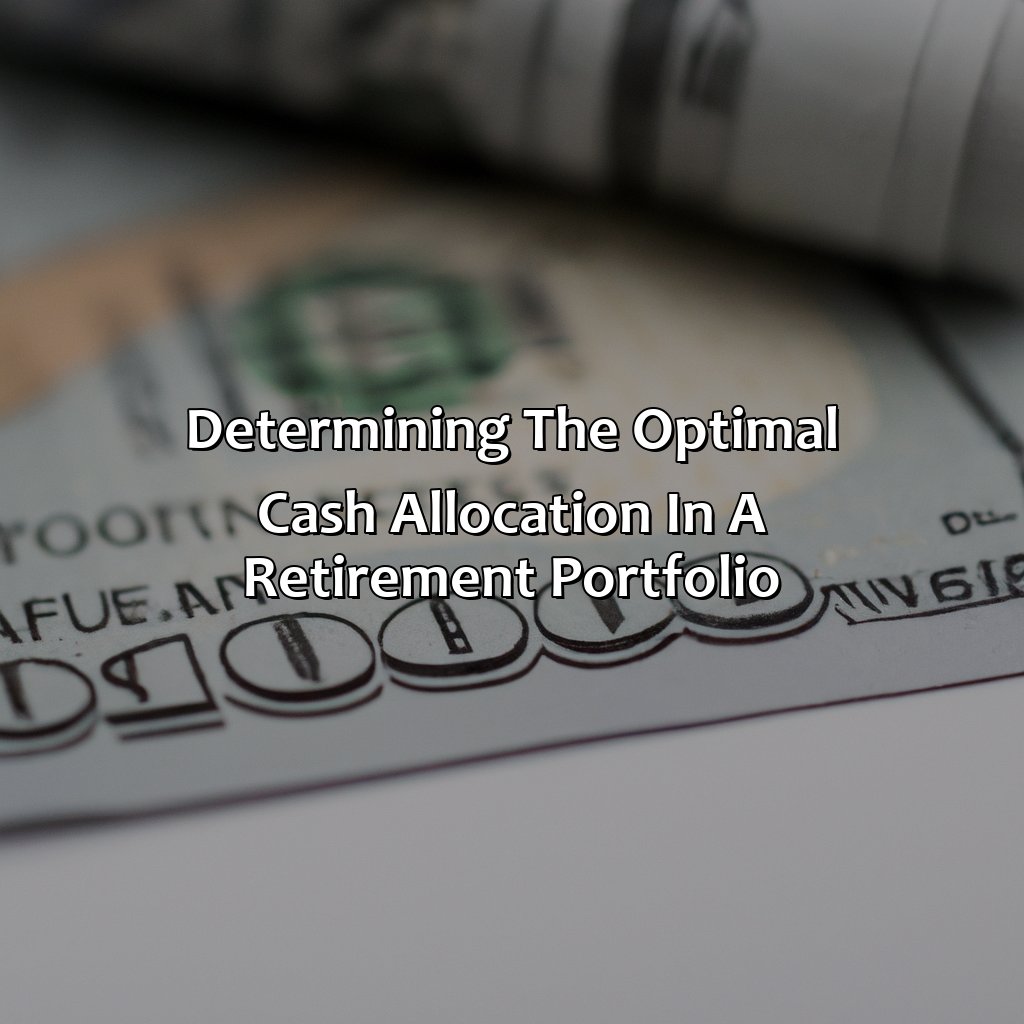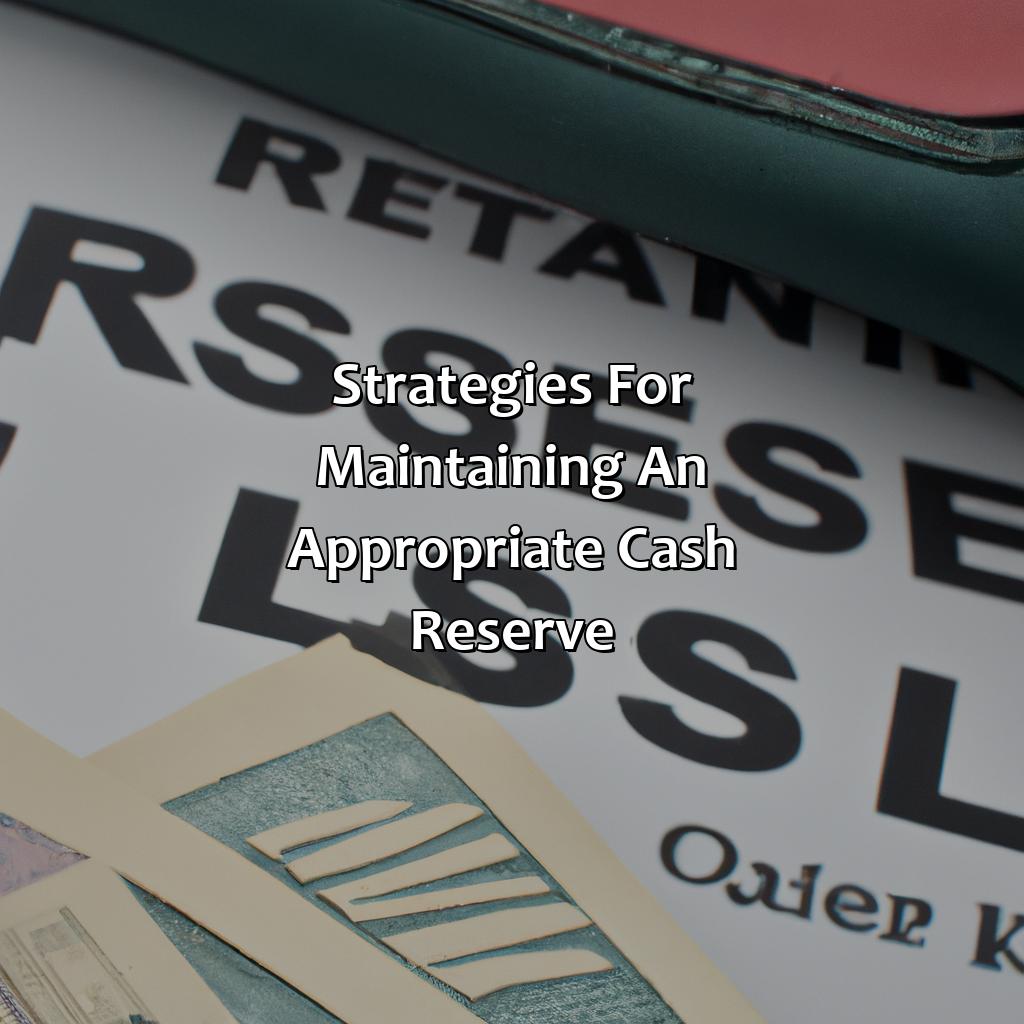What Percent Of Retirement Portfolio Should Be In Cash?
Key Takeaways:
- Personal risk tolerance, time horizon, and retirement goals are important factors to consider in deciding cash allocation in a retirement portfolio. It is essential to determine an optimal cash reserve to ensure financial stability in retirement.
- Market conditions and economic outlook also play a crucial role in cash allocation decisions. Investors should monitor economic trends and adjust cash reserves accordingly to avoid potential losses.
- To maintain an appropriate cash reserve, strategies such as regular rebalancing of portfolio, diversification of assets, and utilization of cash alternatives can be employed. Seeking professional advice in portfolio management is highly recommended to achieve long-term financial goals.
Are you uncertain about how much money to keep in your retirement portfolio as cash? Discover how to navigate the complexities of retirement planning and determine the right percentage of your portfolio to keep in cash. You’ll learn how to maximize your retirement security.
Determining the Optimal Cash Allocation in a Retirement Portfolio
Determining the optimal cash allocation in a retirement portfolio is crucial for retirement planning. As retirees require cash to meet their daily expenses, this allocation is necessary to determine the right balance between cash and investments to create a suitable portfolio.
To determine the optimal cash allocation in a retirement portfolio, we can create a table showcasing different age groups with their corresponding cash allocations. For instance, individuals in their 60s may require more cash to cover expenses as compared to individuals in their 40s or 50s. By analyzing these numbers, one can determine the right allocation.
| Age Group | Cash Allocation |
|---|---|
| 40-49 | 10%-20% |
| 50-59 | 20%-30% |
| 60+ | 30%-40% |
It is essential to note that while these allocations provide guidance, an individual’s financial situation and risk tolerance should also be considered to determine the optimal allocation.
While cash allocation is a critical component of a retirement portfolio, it is equally important to consider the impact of inflation on these cash holdings. As inflation can erode the value of cash over time, retirees may need to consider investing in inflation-protected securities.
It is always advisable to seek professional financial advice, as Sam and Nancy learned. They invested all their retirement savings in stocks and bonds and did not keep sufficient cash for emergencies. Unfortunately, both faced medical emergencies and needed cash, leading to early withdrawal from their retirement portfolios, incurring penalties, and missed returns.
In summary, determining the optimal cash allocation in a retirement portfolio is critical for creating a suitable portfolio. While there is no one-size-fits-all approach, analyzing age, financial situation, and risk tolerance can help in creating an appropriate allocation. It is also crucial to consider the impact of inflation on cash holdings and seek professional financial advice.

Image credits: retiregenz.com by Harry Washington
Factors to Consider in Deciding Cash Allocation
In determining the appropriate cash allocation in a retirement portfolio, various factors require consideration. These factors involve both individual and market-related considerations, such as personal preference, risk tolerance, financial goals, and current market conditions. A portfolio’s cash allocation should align with an individual’s tolerance for market volatility, liquidity needs, and financial goals.
For instance, an investor with a low risk tolerance may prefer to hold a more significant proportion of cash or cash equivalents in their portfolio than someone with a higher risk tolerance. Additionally, investors nearing retirement may consider holding more cash or cash equivalents to secure their funds from market losses and manage short-term income needs.
Furthermore, investors must also factor in liquidity needs when deciding on cash allocation. One’s cash allocation may depend on unforeseen life events or expenses, such as medical bills or home repairs. Therefore, it is essential to consider liquidity needs and hold an adequate cash reserve.
Incorporating these considerations when determining the appropriate cash allocation can help investors prevent losses during market volatility and support short-term income needs. To avoid missing out on potential gains, it is crucial to assess these factors regularly and adjust cash allocation as needed.

Image credits: retiregenz.com by James Arnold
Strategies for Maintaining an Appropriate Cash Reserve
Maintaining an Optimal Cash Reserve for Retirement Portfolio
The ideal percentage of cash in a retirement portfolio is a common concern of many investors. To maintain an optimal cash reserve, consider allocating funds into liquid assets such as money market funds, CDs or savings accounts. Use inflation and anticipated spending as important variables when deciding how much cash is sufficient in a portfolio.
Diversify cash allocation based on anticipated cash needs such as real estate investments, unexpected expenses or emergencies to ensure the necessary liquidity. It is crucial to strictly follow the self-imposed cash allocation strategy to meet retirement cash needs.
To ensure that cash can grow and recoup from market downfalls, avoid keeping a large percentage of cash permanently in the portfolio. Continuously reassessing and readjusting the cash allocation percentage is also vital.
Pro Tip: Maintaining sufficient cash allocation is crucial not only for meeting regular expenses but also for ensuring a smoother long-term portfolio performance.

Image credits: retiregenz.com by Adam Woodhock
Importance of Seeking Professional Advice in Portfolio Management
Seeking expert advice is crucial for effective portfolio management. Professionals can provide insights into the market, investment strategies, and risk management. They can also identify potential pitfalls that inexperienced investors might miss. A skilled portfolio manager can help balance the portfolio with a mix of assets that align with the investor’s goals and risk tolerance, while also ensuring that the portfolio remains diversified.
It is important to remember that not all portfolio managers are created equal. Some may have expertise in specific areas or asset classes, while others may have a broader range of knowledge. It’s essential to find someone whose skills and experience align with your investment goals.
Moreover, seeking professional advice can help you avoid making emotional investment decisions that can be detrimental to your portfolio. Emotional reactions to market volatility can lead investors to make poor decisions, such as selling low and buying high.
Ultimately, the value of expert advice lies in the ability to make informed decisions that align with your investment goals, while also mitigating the risks associated with the market. By not seeking professional advice, investors run the risk of missing out on potential gains and exposing themselves to greater risks.
Don’t risk your investments by going it alone. Seek out the expertise of a qualified portfolio manager who can help guide you towards a successful investment strategy.

Image credits: retiregenz.com by James Duncun
Some Facts About What Percent of Retirement Portfolio Should Be in Cash:
- ✅ Financial experts recommend keeping 3-6 months of living expenses in cash as an emergency fund. (Source: NerdWallet)
- ✅ Some advisors suggest having up to 5% of your retirement portfolio in cash for short-term needs and unexpected expenses. (Source: Kiplinger)
- ✅ Holding too much cash, especially during times of low interest rates, can result in missed investment opportunities and lower returns. (Source: The Balance)
- ✅ The appropriate percentage of cash in a retirement portfolio varies based on factors such as age, risk tolerance, and investment goals. (Source: Investopedia)
- ✅ A financial advisor can help determine the optimal allocation of cash in a retirement portfolio based on individual circumstances. (Source: Forbes)
FAQs about What Percent Of Retirement Portfolio Should Be In Cash?
What percent of retirement portfolio should be in cash?
There is no definitive answer to this question since it depends on a multitude of factors such as age, financial goals, risk tolerance, and market conditions. However, the general rule of thumb is to keep 3-6 months of living expenses in cash.
Why should I keep cash in my retirement portfolio?
Cash is a crucial component of any retirement portfolio as it provides liquidity and stability during market downturns, allows for regular distributions, and serves as a buffer against unexpected expenses or emergencies.
What are the disadvantages of holding too much cash in retirement portfolio?
Although cash is important, holding too much of it can be detrimental to the growth and profitability of your portfolio. This is because cash tends to have minimal returns and loses value due to inflation over time.
How do I determine the appropriate percentage of cash in my retirement portfolio?
Determining the appropriate percentage of cash in your retirement portfolio requires a careful consideration of your financial goals, investment horizon, risk tolerance, and other factors. A financial advisor can help you determine a personalized asset allocation strategy.
What are some alternatives to holding cash in my retirement portfolio?
Some alternatives to holding cash in your retirement portfolio include investing in short-term bonds, certificates of deposit (CDs), and money market funds, as they offer higher yields and lower risk than pure cash.
Can I change the percentage of cash in my retirement portfolio over time?
Yes, you can adjust the percentage of cash in your retirement portfolio based on your changing financial needs, market conditions, and investment objectives. It is important to review and rebalance your portfolio periodically to ensure optimal performance.






